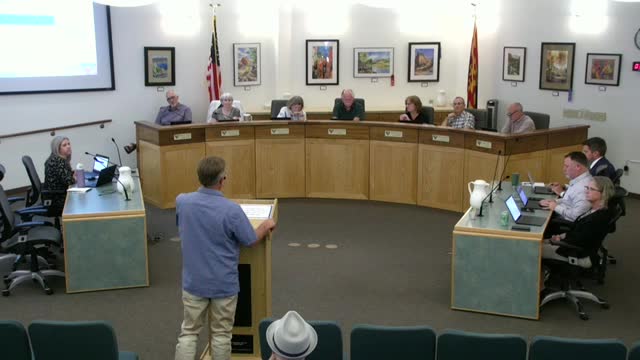Sedona water seminar reveals groundwater influences from leach fields and snowmelt recharge
July 09, 2025 | Sedona, Yavapai County, Arizona
This article was created by AI summarizing key points discussed. AI makes mistakes, so for full details and context, please refer to the video of the full meeting. Please report any errors so we can fix them. Report an error »

The Sedona City Council meeting on July 9, 2025, focused on critical discussions regarding groundwater contamination and the presence of PFAS (per- and polyfluoroalkyl substances) in local water sources. Council members and experts explored the origins and implications of these chemicals, which are primarily man-made and have raised concerns about their impact on public health and the environment.
One key point raised during the meeting was the historical context of local wells, particularly one that has been in operation since 1949. The council discussed how groundwater contamination may not solely stem from the well itself but could be influenced by decades of leach fields used for wastewater management in the area. This practice, prevalent until the mid-1980s, allowed contaminants to seep into the groundwater, potentially contributing to the current PFAS levels.
The discussion also touched on the nature of PFAS, clarifying that these substances are not naturally occurring like arsenic but are synthetic compounds. The council members expressed the need for further investigation into the sources of PFAS in Sedona's water supply, noting that while fire-fighting foam is a known contributor, its use in the area has been limited.
Additionally, the meeting highlighted recent findings from water seminars held in Flagstaff, where experts discussed the influence of snowmelt on aquifer recharge. It was suggested that the local Redwall-Muav aquifer may recharge more quickly than previously believed, challenging the long-held notion that groundwater takes thousands of years to reach extraction points.
As the council continues to address these pressing water quality issues, the discussions underscore the importance of understanding the historical and environmental factors contributing to groundwater contamination in Sedona. The next steps will likely involve further research and potential compliance measures to ensure the safety of the community's water supply.
One key point raised during the meeting was the historical context of local wells, particularly one that has been in operation since 1949. The council discussed how groundwater contamination may not solely stem from the well itself but could be influenced by decades of leach fields used for wastewater management in the area. This practice, prevalent until the mid-1980s, allowed contaminants to seep into the groundwater, potentially contributing to the current PFAS levels.
The discussion also touched on the nature of PFAS, clarifying that these substances are not naturally occurring like arsenic but are synthetic compounds. The council members expressed the need for further investigation into the sources of PFAS in Sedona's water supply, noting that while fire-fighting foam is a known contributor, its use in the area has been limited.
Additionally, the meeting highlighted recent findings from water seminars held in Flagstaff, where experts discussed the influence of snowmelt on aquifer recharge. It was suggested that the local Redwall-Muav aquifer may recharge more quickly than previously believed, challenging the long-held notion that groundwater takes thousands of years to reach extraction points.
As the council continues to address these pressing water quality issues, the discussions underscore the importance of understanding the historical and environmental factors contributing to groundwater contamination in Sedona. The next steps will likely involve further research and potential compliance measures to ensure the safety of the community's water supply.
View full meeting
This article is based on a recent meeting—watch the full video and explore the complete transcript for deeper insights into the discussion.
View full meeting
